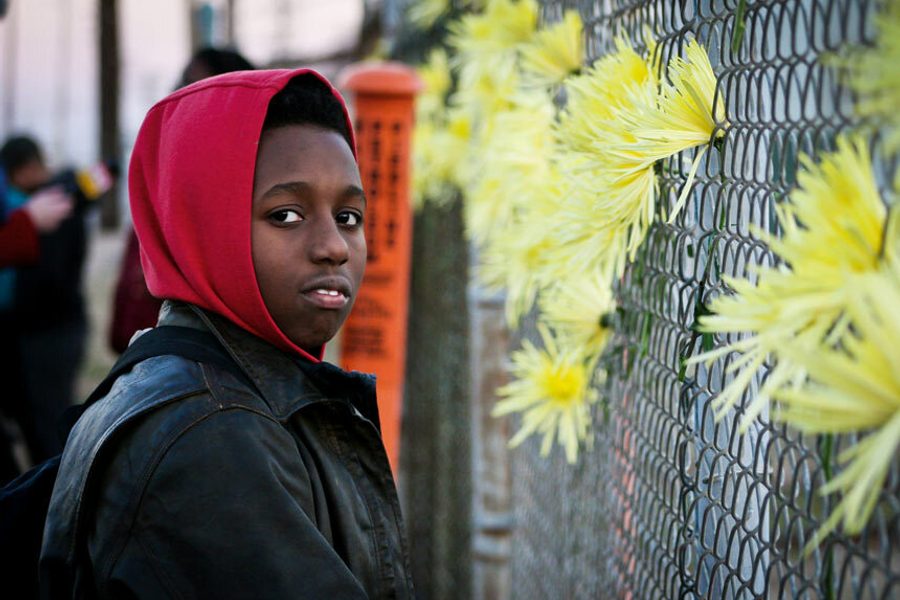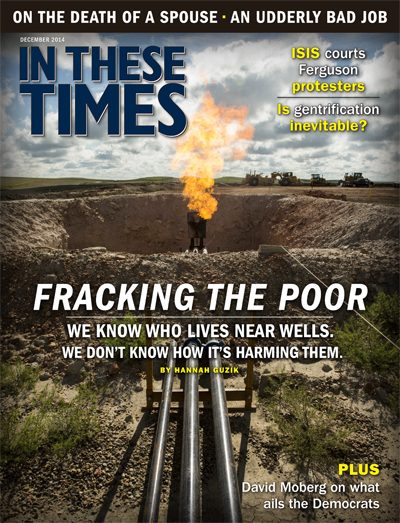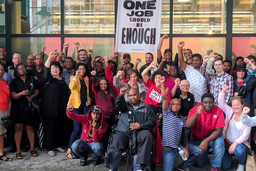
In Curtis Bay, a neglected waterfront neighborhood at the southwestern fringes of Baltimore, an alliance of environmental activists and neighborhood groups — including an energetic and creative band of high school students — has succeeded in holding off the construction of an enormous trash incinerator project.
The students wowed members of the Baltimore Board of Education this May with a presentation that mixed carefully researched environmental and public health analysis with a hip-hop routine that had board members up on their feet. Greg Sawtell, an organizer with Baltimore-based United Workers (one of several organizations allied against the incinerator), says conversations with school board members since then have left him optimistic that they will oppose the project.
Even though preparation work on the incinerator began last year, full-scale construction is stalled, and the projected completion date has been pushed to 2016 from an initial estimate of 2013. Opponents are reluctant to claim sole credit for the delays, as there have also been financing and regulatory issues, but believe their efforts are sharpening scrutiny and slowing progress.
Talk of the so-called trash-to-energy incinerator plant began some five years ago, after chemical manufacturer FMC Corp closed a pesticide plant, eliminating 130 jobs (including 71 union jobs with the United Steelworkers) and leaving vacant a large parcel of land zoned for heavy industry. The site straddles the Curtis Bay and Fairfield neighborhoods of the city, parts of which have large African-American populations. To many political and community leaders in this deindustrialized and job-starved section of the city — which lies far from the famed Inner Harbor or Fells Point entertainment districts — it seemed like a boon when Energy Answers Inc., an Albany, New York-based power development company, appeared on the scene to propose a plant that would burn commercial and construction waste to produce electricity. Energy Answers billed the plant as a way to restore up to 200 jobs and provide clean, low-cost energy. The proposal came with enthusiastic endorsements from local political leaders, especially Maryland Gov. Martin O’Malley and city Mayor Stephanie Rawlings-Blake.
Initially, Energy Answers struggled to find loans and missed a deadline to secure federal stimulus money. But in May 2011, the project got a big boost when O’Malley signed legislation to help make the plant profitable through a complicated pollution credits scheme that would funnel cash to Energy Answers for generating so-called clean power. (A few days later, Energy Answers gave $100,000 in campaign contributions to the Democratic Governors Association, chaired by O’Malley.)
But for locals, the bloom was already coming off the rose. It had emerged that an estimated 400 to 600 exhaust-spewing trucks carrying waste tires, metals, plastics and construction materials would travel through the streets of Curtis Bay every day to feed the plant. The incinerator itself would burn up to 4,000 tons of waste a day for decades— raising even more alarming public health concerns. In a recent Baltimore Sun op-ed urging cancellation of the project, Gwen DuBois, of Chesapeake Physicians for Social Responsibility, said the plant could emit dioxin, mercury and other heavy metals, which can cause cancer and other diseases.
“What a lot of people don’t realize is just how dirty these plants really are,” says Mike Ewall, founder and co-director of Energy Justice Network, a national organization devoted to helping communities fight dirty energy development. “They are much worse than coal or anything else. And this would be the biggest such plant in the country.” Curtis Bay is already the most polluted zip code in Maryland, Ewall notes, adding that low-income neighborhoods of color are often used as dumping grounds precisely because they lack the political power to fight back.
It’s the threat of dangerous air pollution that has students at Curtis Bay’s Benjamin Franklin High School leaving the classroom and demonstrating in the streets of Baltimore. In their largest action, in late 2013, more than 100 protesters marched from the school to the site of the proposed incinerator — just a mile away. A related petition has garnered more than 2,000 signatures.
Recent Benjamin Franklin graduate Audrey Rozier is a leader of Free Your Voice, the student group agitating to stop the incinerator, as well as the co-author of a rap song devoted to the campaign. “We have our rights according to the amendments / But why do we feel like we’ve been so resented / Ignored, shoved to the side where opinions don’t matter,” goes one verse.
Rozier says the song, which she has performed all over the city, has helped educate the local community and a broader Baltimore audience. “What was amazing to me in the beginning was that people outside the community were going to [build the incinerator], but the people who live here didn’t know anything about it,” she says. “I think that’s changed.”
That disconnect between the political elite and the communities most affected by its decisions is at the heart of the fight over the Curtis Bay incinerator, says Sawtell. In Baltimore and elsewhere, decisions on economic development policies are made by a political and economic elite with little or no input from the working-class residents who must live day-to-day with the consequences. “Community members we’ve talked to say no one asked their opinion before the project was announced,” says Sawtell. “Somehow I think if it was the children of Gov. O’Malley, or the children of Mayor Rawlings-Blake, who were going to be poisoned, the decision would be different.”
The campaign is drawing increasing support, most recently from the nearby Anne Arundel County chapter of the NAACP. Meanwhile, enthusiasm for the plant among politicians seems to have cooled in the face of the protests, Sawtell says, with near-silence on the issue from Mayor Rawlings-Blake in the past few years. The Democratic candidate for governor in this year’s election, Anthony Brown, declined to take a position.
If the construction delays are any indication, even Energy Answers may be losing interest, although the company tells In These Times it’s in “confidential discussions for waste and energy sales” and plans to proceed with the project. Sawtell, however, believes that a major push from opponents now could kill the plan once and for all.








